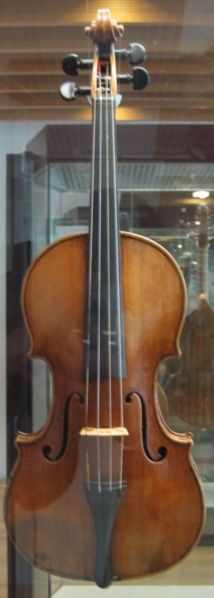
As a member of IC’s Gamer Symphony Orchestra, I hear the conductors referring to instruments “singing” pretty frequently. A lot of our music is written for instruments to substitute for vocals, so breathing patterns and articulations have to be tweaked to produce a sound that’s less like a machine and more like a voice. Recent studies show, however, that the violin itself was likely designed by the great Stradivari and Guarneri to mimic a human’s singing voice.
In November of 2006, researchers at Texas A&M University published their findings from analyzing wood samples from string instruments made by Stradivari, Guarneri, and two others from roughly the same time period. Samples from the first two showed that the wood was treated in a much different way than the other two, and while these treatments were likely to protect the wood from worms and fungal deterioration, further investigation showed that these chemicals also contributed to the unique sounds of these instruments.
After proposing that the instruments themselves were designed to produce the vocal sound, the same team used phonetic analysis to compare a Metropolitan operatic soprano and a 1743 Guarneri violin. By tracking harmonics in each vowel sound, the researchers found that the violin was able to produce the Italian “i” and “e” sounds, as well as vowel sounds from French and English. Today, only 650 Stradivarius violins and 150 Guarneri violins exist, and specimens of the latter have run for $10 million to $20 million.
Of course, not all instruments are designed to sound pretty. The tromboon, for example, is a trombone with the double reed and bocal of a bassoon in place of the normal mouthpiece and personally sounds like the cross between a truck horn and a dying dinosaur. Peter Schickele, who created it for the works of his fictitious composer, P. D. Q. Bach, said on his website that the calling the tromboon a hybrid is a more polite way to refer to it and “it has all the disadvantages of both.”
Now, if only we could resurrect that dinosaur to do the harmonic analysis with the tromboon.






